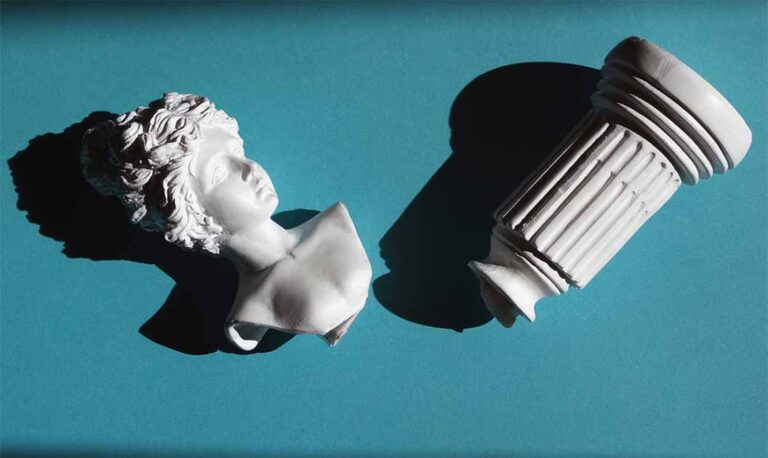A violent American tourist has been arrested for destroying ancient Roman statues at a Jerusalem museum. In his defense, the man claims he suffered from “Jerusalem syndrome,” a suspected psychiatric disorder in which a person visiting Jerusalem is overcome by religiously motivated delusions.
The American Jew vandal destroyed priceless works of art at the Israel Museum, including an 1,800-year-old sculpture of the head of Athena and a statue of a griffin holding the Wheel of Destiny of the Roman god Nemesis. Israeli police said AP News that the act of vandalism “raised questions about the security of Israel’s priceless collections” and that it caused heritage officials to question why there has been an increase in similar attacks in Jerusalem.
What sets this story apart is that the vandal claims to have suffered from “Jerusalem Syndrome.” However, courts rarely accept such an excuse to let blatant criminals off the hook.
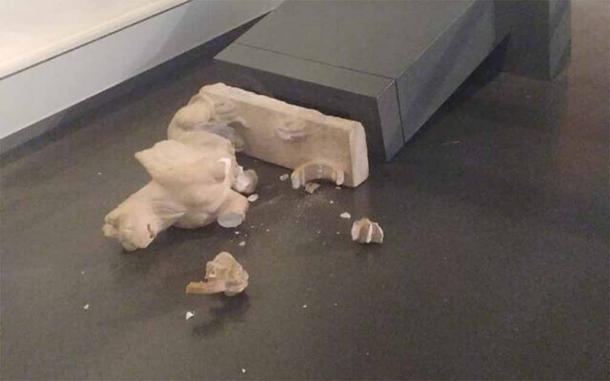
The tourist destroyed an ancient griffin statue inside the Israel Museum in Jerusalem. Credit: Israel Police.
When the delusions strike
The attack took place on Friday, October 6, 2023, and Israeli police quickly arrested the American tourist. Police identified the suspect as “a 40-year-old radical American Jewish tourist.” In his defense, the man claimed to have broken the statues because he considered them “idolatrous and contrary to the Torah,” as reported by AP. However, in contrast to this initial admission of guilt, Nick Kaufman, the man’s defense attorney, denied that his client destroyed the arts out of religious fanaticism. Instead, he claims the man suffered from an alleged mental disorder known as “Jerusalem Syndrome.”
When people attribute results or events to ghosts, demons, or supernatural entities, it is often referred to as “supernatural or paranormal attribution.” This means attributing causality or blame to supernatural forces, rather than finding natural or scientifically explainable factors. Some claim that “Jerusalem syndrome” is a form of cognitive disorientation that believers suffer when visiting the center of the Christian, Jewish, and Muslim religious systems. The condition is claimed to cause people “to believe they are characters from the Bible,” according to AP News.
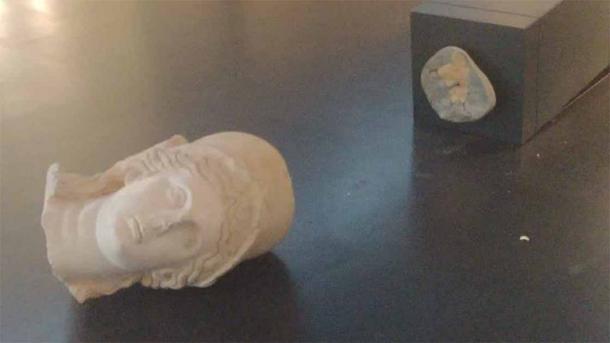
One of the Roman statues broken by the American tourist at the Israel Museum. Photo: Israeli Police.
Jerusalem syndrome: a mask for violence?
Perhaps what is most telling about this story is that the accused has yet to undergo a psychiatric evaluation, even though his lawyer has already diagnosed his client’s condition as Jerusalem.” Now consider all the recent reports about “radical ultra-Orthodox Jews spitting on and assaulting Christian worshipers.” At the beginning of the year, AP reported that Jews had defaced Christian graves in a Jerusalem cemetery, and in February another Jewish American tourist attacked a statue of Jesus at a Christian pilgrimage site in Jerusalem.
It is perhaps no coincidence that this manifestation of “Jerusalem syndrome” occurred during the Jewish harvest festival, Sukkot, which ended at sunset yesterday. In response to man’s actions, the Israel Museum said Thursday’s vandalism was “a disturbing and unusual event” and that the organization “condemns all forms of violence.” The Israeli government attributed this act “to Jewish iconoclasm in obedience to early prohibitions against idolatry,” and not to so-called Jerusalem syndrome.
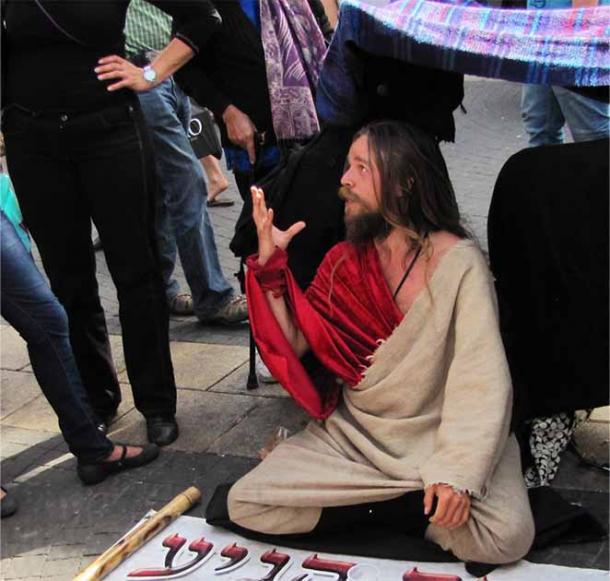
Man claiming to be the Messiah in Tel Aviv, 2010 ( Jacek Proszyk / CC by SA 4.0 )
A syndrome that targets the incriminated statues
One of the destroyed statues depicts Athena, the goddess of wisdom in ancient Greek mythology. Although Athena herself is not particularly offensive to Orthodox Jews , what concerns followers of any monotheistic Abrahamic religion is the veneration or worship of any deity outside their own tradition. Judaism is strictly monotheistic, emphasizing belief in Yahweh (a god) and the worship, or even recognition, of other gods or goddesses contradicts their core beliefs.
Putting aside the Jerusalem syndrome, it was an act of iconoclasm and violence , similar to the way ISIS adhered to an extreme interpretation of Islam that rejects the use of images or statues in religious practices. This view comes from the early days of Islam, when the Prophet Muhammad spoke out against the worship of idols and images that aligned with the historical Islamic concept of iconoclasm.
Both ISIS and the American tourist consider the worship or veneration of statues, artifacts, and cultural heritage to be a form of idolatry. Therefore, the destruction of such statues is a means of eliminating what are perceived to be false idols and a return to the original form of monotheistic worship.
https://www.youtube.com/watch?v=sqlv1P4XBVsM
An explanation of hysteria
Eli Escusido, director of the Israel Antiquities Authority, said the destruction of objects in the museum represents “a shocking case of destruction of cultural values,” in which cultural values ”are being destroyed by religiously motivated extremists.” . However, the criminal’s lawyer sticks to his story: the man suffered from “Jerusalem syndrome.”
Let’s enter for a moment the future courtroom of this impending trial. Defense counsel will no doubt point out that the 1989 book “The city of mirrors » describes Jerusalem syndrome “as a form of hysteria, called “Jerusalem fever”, attributed for the first time by the writer Félix Fabri in the 15th century. It is also worth pointing out that this disease was first described clinically in the 1930s, by the famous Jerusalem psychiatrist Heinz Hermann, who said that some people visiting the Holy City “suffered from hysteria and delusions.” .
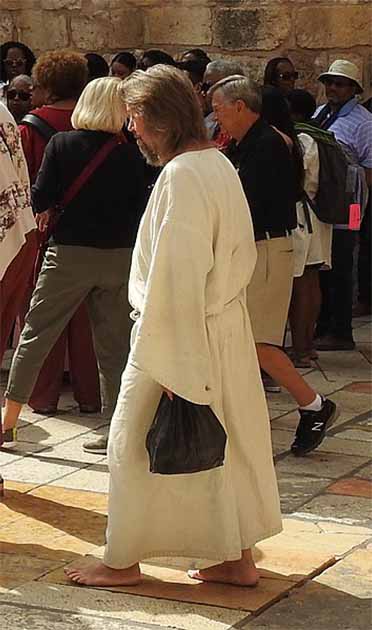
A man in a dress, barefoot, in Israel would suffer from Jerusalem syndrome. Source: Marcin Sochacki / CC by SA 4.0 .
Experts reject Jerusalem syndrome
The defense lawyer will no doubt refer to a 2000 article in the British Journal of Psychiatry, Bar-El et al. who claims to have identified and described “a specific syndrome that appears in tourists without a psychiatric history”. However, this claim has been disputed by researchers. M. Kalian and E. Witztum who found that “almost all tourists who exhibited the behaviors described suffered from mental disorders before their arrival in Jerusalem.”
If this fact is not enough to undermine the man’s claim that he was guided by supernatural action, the prosecution could point out that among the tiny proportion of tourists who allegedly showed spontaneous psychosis after arriving in Jerusalem, not one of them “had not been in good health”. before their arrival in the city. That is, each of them suffered from mental health problems before going to Jerusalem, which then erupted in outbursts of violence against icons of other religions.
Top image: Broken Roman statue. Source: Dmitri /Adobe Stock.
By Ashley Cowie


